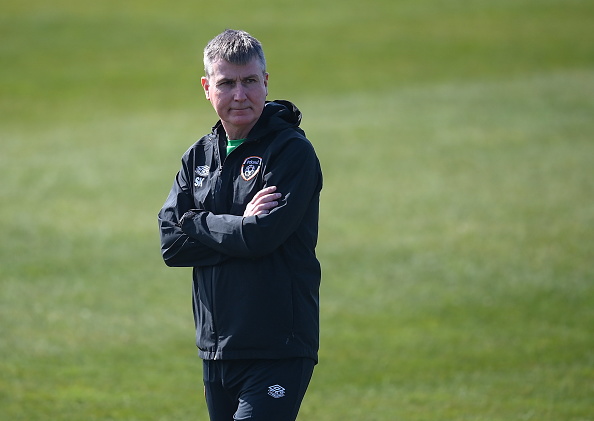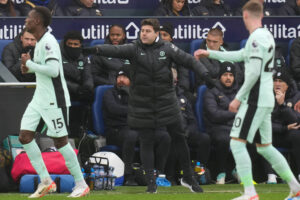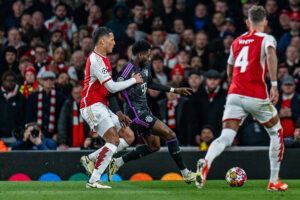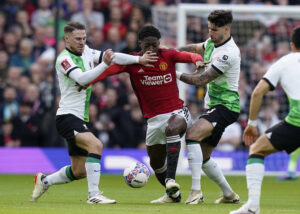The Republic of Ireland will be looking to continue their recent upturn in fortunes against Belgium and Lithuania this week but just one look at the squad named by Stephen Kenny and the sheer lack of goals in the current Irish ranks is glaringly obvious.
James McClean with 11 is the sole player in double digits, and he’s now marked down as a defender. The only other players with over two goals to their name are Shane Duffy, an actual defender and often the most dangerous goal threat in recent years, and Callum Robinson, with seven apiece.
When digging deeper, the numbers of Premier League goals scored by Irish players this season are equally staggering; seven in total so far (the record-low is ten), scored by seven different players, four defenders; Duffy, Matt Doherty, Séamus Coleman, Andrew Omobamidele (injured), one who’s now a Championship loanee; Jeff Hendrick, and just two strikers; Adam Idah, ruled out for the season with injury and Shane Long; 35 and not considered part of Kenny’s youth revolution.
It’s been left to Will Keane, the so-far one cap wonder at 29, to pick up the slack in League One, with his 19 league goals for Wigan Athletic by far the most of any player in the squad. In comparison, Troy Parrott has just five in the same division and Robinson six in the Championship. Scott Hogan does have ten for Birmingham City but has yet to open his account for the national team and can’t be considered integral to their future.
This is something that must be rectified if Kenny’s masterplan is to be realised but it’s not exactly a surprising predicament; a lack of goals and goal scorers has been an issue in Irish football for the bulk of the last 35 years, with the obvious exception of the great Robbie Keane.
The Republic of Ireland and the Need of a Goalscorer
Put ‘Em Under Pressure! (We’re All Part of Jackie’s Army)
Before Robbie, in the Jack Charlton era, strikers were seen less as scorers and more as providers with route one the chosen direction of style – long balls to the likes of Niall Quinn, Tony Cascarino, John Aldridge and until 1990, Frank Stapleton, knock-downs to on-rushing midfielders Ronnie Whelan and Ray Houghton. This approach was taken despite Aldridge entering Euro ’88 as the First Division top scorer – his 26 goals for title-winning Liverpool making him one of only two Irish men to achieve this honour.
“Big Jack” departed the international scene following failure to qualify for Euro ’96, later followed by Aldridge and Cascarino (both 37 at the time), as Mick McCarthy looked to inject some much-needed youth into the Irish set-up. This came in the shape of Robbie Keane and Damien Duff, who made their debuts together against the Czech Republic in March 1998. From this point until retirement, both were the main output of goals and creativity.
An Ode to Robbie
The outlier that was Robbie Keane is best shown through his goal record for Ireland; 68 in total, a casual 47 ahead of the next best, his old strike partner Quinn. Keane broke the record at just 24, and it’s unlikely to be threatened anytime soon, if ever. His penchant for big goals; Germany and Spain at the 2002 World Cup, away to the Netherlands, Italy and France to name a few, also arguably make him Ireland’s greatest ever player, at international level anyway.
His club record isn’t too shabby either. He’s the only Irish player in the much-vaunted “Premier League 100 Club” and one of just three with over 100 in the top-flight (football did exist before 1992 Sky) alongside Stapleton and Quinn. A Premier League legend, a combination of a predatory number nine and a creative ten, his legacy is perhaps underappreciated by a lack of silverware, the number of clubs (11 with two stints at Spurs), claims that many of those were boyhood favourites and a tendency to comment on every single Instagram post ever.
Most importantly, he’s also the owner of one of the greatest celebrations in football history, and probably not one to try yourself as Luke Ayling can attest to.
And the Rest
The list of other strikers to don the green shirt in Keane’s time is less impressive; notable exceptions being Duff, who wore the nine shirt at the 2002 World Cup, Kevin Doyle and Shane Long, who did a lot of the running for Robbie as his career went on. None were clinical, however – almost as soon as “Shane Long’s on fire” was penned, his goal scoring was extinguished.
Take a look at some of the names and pick out those you do or don’t recognise: David Connolly, Gary Doherty (also played centre-half), Clinton Morrison, Caleb Folan, Conor Sammon, Leon Best (one of only three Irish Premier League hat-tricks), Darryl Murphy and of course Joe Lapira (an amateur striker playing college football for Notre Dame, picked up on the US ’07 summer tour – another symbol of the ill-fated Steve Staunton era).
Jonathan Walters was the other hat-trick hero alongside Best and Keane. He can claim to be a success but most of his time with the Irish team was spent as a battering-ram on the right wing, although he did still score 14 goals including the two that sent the Boys in Green to Euro 2016. His relationship with Roy Keane cannot claim to be a success on the other hand, but he’s hardly alone in that regard.
Following Keane’s retirement in 2016 and Irish football’s deepest descent into decline in the years since, the likes of David McGoldrick and Sean Maguire laid claim to the throne. Both proved to be more of the same – non-scoring strikers. Like anything in Irish football, blame can be laid at the feet of the FAI for this.
Kenny and the Kids Are Alright
Stephen Kenny has revamped large parts of the set-up, moving away from the turgid football of previous years and encouraging players, limited they may be, to keep the ball on the ground for longer than three passes. His tenure has seen the emergence of several promising young players, namely in goalkeepers Gavin Bazunu and Caoimhin Kelleher. The defence is also solid – it usually is for Ireland given an unexplained mass production of quality full backs. The midfield is improved but it’s up top where Kenny needs to find a star man.
Wales are the prime example of what can happen to a smaller nation with just one or two top players. It’s a bit ambitious to think Ireland will produce a player of Gareth Bale’s quality but you get the point.
So Who Could Be Ireland’s “Next Robbie Keane”?
Robinson, Parrott and the others in the current set up aren’t Premier League standard. Idah hasn’t shown to be yet and may end up another channel running Irish striker. Michael Obafemi’s form has picked up of late with Swansea City in the Championship but there’s huge questions around his attitude and ego given his rejection of U21 call-ups. All, as well as Chiedozie Ogbene, might prove to be adequate sidekicks and chip in with a few goals.
Ireland’s hope for a top striker looks to be in a pair of 17-year olds; Evan Ferguson, recent debutant with Brighton, and given their profligacy in front of goal more games might come soon, and Kevin Zefi, signed by Inter Milan (like Keane) last year from Shamrock Rovers.
The development of these two and others is critical to the next steps in Kenny’s revolution and may prove the difference between an improvement in quality of football and qualification to a major tournament in the coming years.
Main Photo






